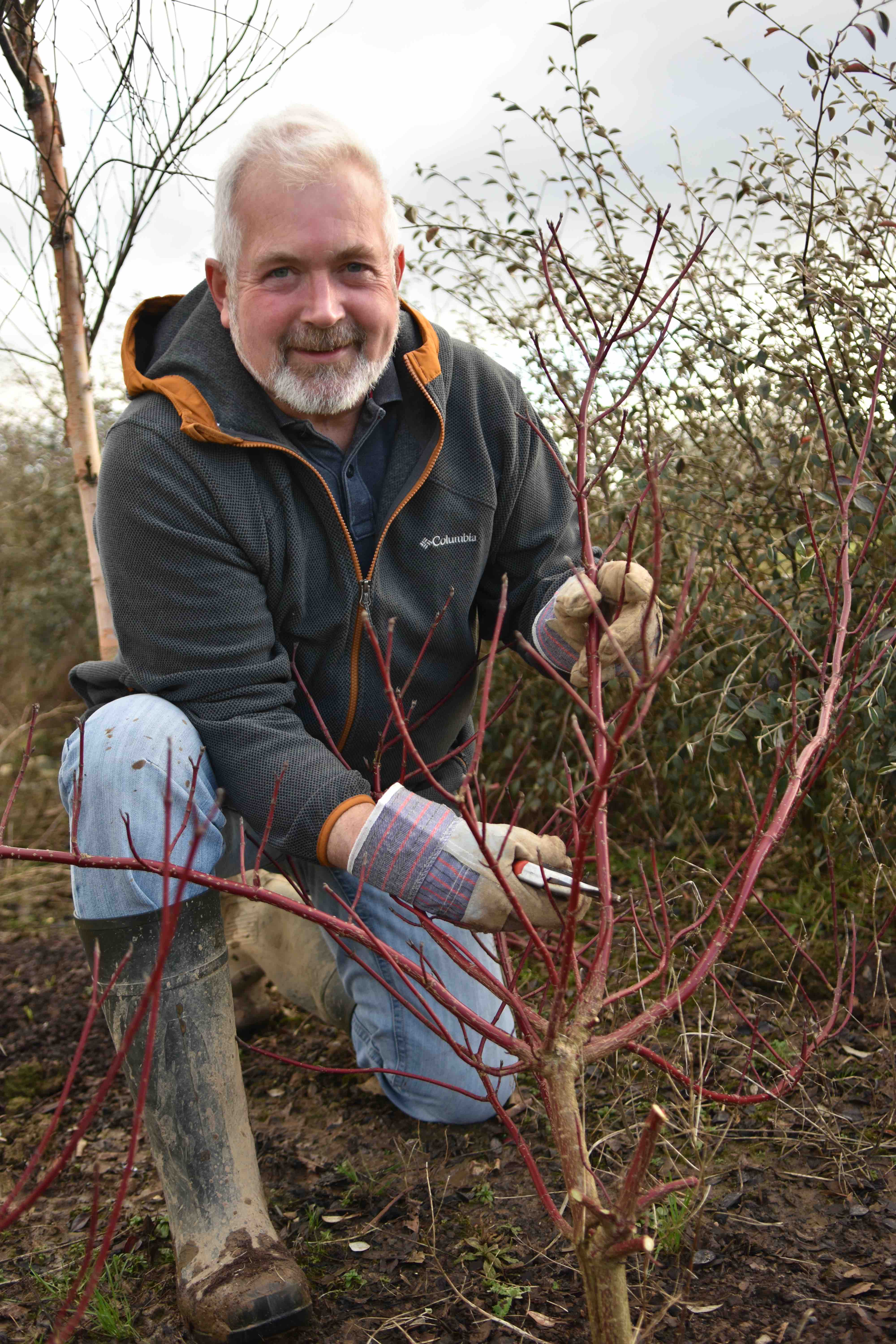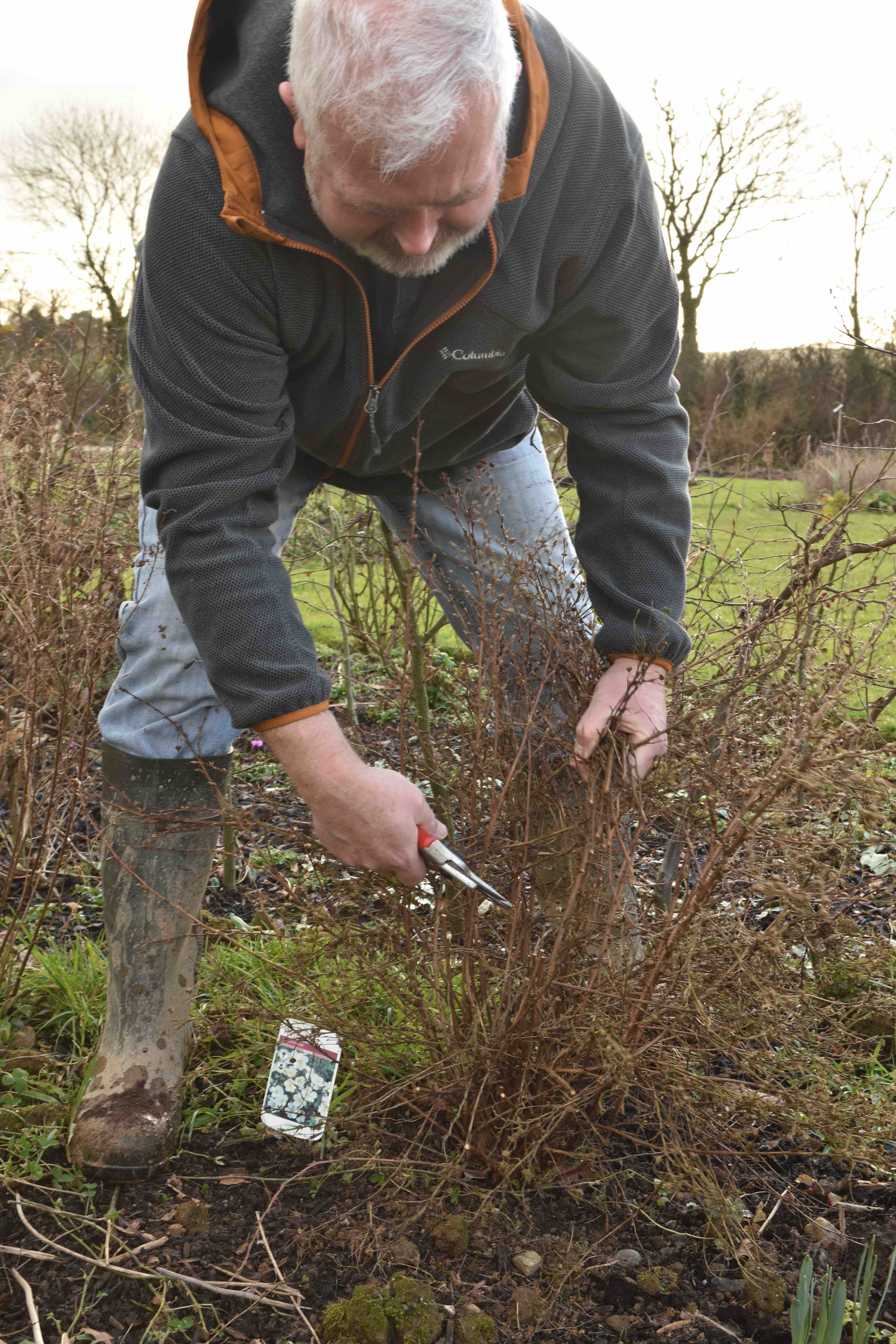It is still a bit early for many gardening activities. The ground is wet and frost is keeping us off the grass and borders. But there are still a few useful jobs we can do. While it is still a bit early to prune roses and we shouldn’t go round the garden snipping for the sake of it, we can prune some shrubs.

Cornus grown for their winter stems, such as Cornus alba ‘Sibirica’ and Cornus sericea ‘Flavirimea’ are brightest when their stems are young. One year and two year stems are most colourful and it is usual to prune the stems back hard every spring or every other spring. Cut back the branches with secateurs or use loppers or even a saw for very old branches if you have not pruned your cornus for a while.
Ideally prune them before the new growth begins. You can prune them from now till mid March. Cut stems now and use them in a vase, either on their own or with daffodils – they last for weeks and look even better when they start to sprout leaves. You can even push the cut stems into outdoor pots between tulips and pansies to give extra height – the stems may even root. Otherwise keep the stems and dry them to use to put among peas and beans for support.
Apart from being colourful in winter, cornus are valuable because they will grow in wet and clay soils.

Shrubby potentillas are easy to prune too. They often get left for years, to get taller and wider. But they are not pretty in winter and can be rather ungainly brown blobs in the border. They tolerate pruning well so you can cut them back as much as you like now, even down to 15cm if you like, and they will rapidly grow back in spring and be full of flowers in summer. They do not need pruning every year but every three years or so is perfect.
Homes for birds
If you do not have room for more trees and shrubs in the garden you can always help birds nest but putting up boxes. Birds can be slow to adopt new nesting places and now is the ideal time to put up boxes so that the birds have time to investigate and decide if they like your additions to their accommodation.
Although birds have a variety of needs, most garden birds prefer a shady spot and a wall or fence facing north or east is usually best. Sunny walls can get too hot in spring. For most birds you should fix the nesting boxes 1.5-2m above ground level, although sparrows, which can have communal boxes, and boxes for starlings, can be fixed higher. Avoid placing boxes near windowsills or other structures that will help cats to reach them. If possible, fix them so they are tilted forward slightly to help keep rain off the openings.
Your style of bird box will influence which birds nest. If the entrance hole is just 25-28mm in diameter it will attract blue tits and great tits. A slightly larger hole, 32mm in diameter will allow sparrows to nest. An open-fronted box with a hole or slit 50mm or more will suit wrens and robins but a larger opening is needed for blackbirds and thrushes. You do not need to hide the boxes in vegetation but nervous species will be more tempted if there are surrounding plants. But some birds need a direct flight path to the opening so keep the entrance free from leaves and branches. You can buy nesting boxes but if you have some wood collecting dust in the shed, look online for instructions and make your own – a perfect family activity for a winter’s day.